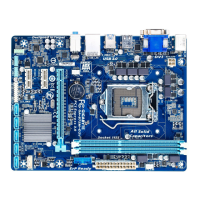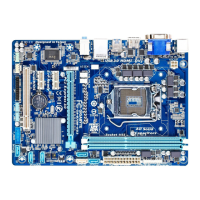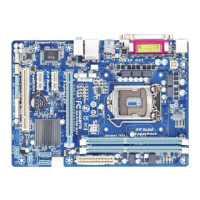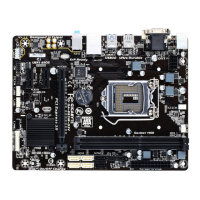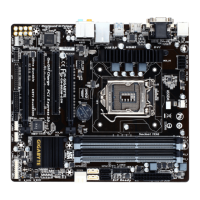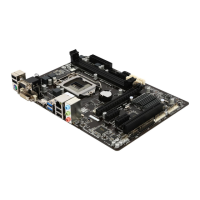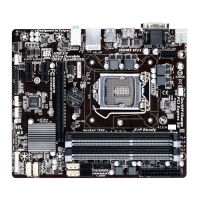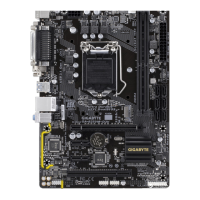Do you have a question about the Gigabyte GA-B75M-D3H and is the answer not in the manual?
Visual representation of motherboard components and connectors for easy identification.
Illustrates the functional blocks and data flow within the motherboard.
Essential guidelines and safety measures to prevent damage during hardware installation.
Detailed technical specifications of the motherboard, including CPU, memory, and expansion slots.
Description and function of all external ports and connectors on the motherboard's rear panel.
Details and pinouts for all internal headers and connectors on the motherboard.
Overview of the BIOS Setup program's main menu, navigation, and function keys.
Settings for CPU, memory frequencies, voltages, and system monitoring.
Configuration of system language, date, time, and SATA port information.
Settings for boot order, NumLock, logo display, and CPU features.
Enables/disables onboard devices like SATA, USB, LAN, and audio.
Options for system power states, wake-up events, and power saving features.
Procedures for saving changes, exiting BIOS, and loading default settings.
Visual representation of motherboard components and connectors for easy identification.
Illustrates the functional blocks and data flow within the motherboard.
Essential guidelines and safety measures to prevent damage during hardware installation.
Detailed technical specifications of the motherboard, including CPU, memory, and expansion slots.
Description and function of all external ports and connectors on the motherboard's rear panel.
Details and pinouts for all internal headers and connectors on the motherboard.
Overview of the BIOS Setup program's main menu, navigation, and function keys.
Settings for CPU, memory frequencies, voltages, and system monitoring.
Configuration of system language, date, time, and SATA port information.
Settings for boot order, NumLock, logo display, and CPU features.
Enables/disables onboard devices like SATA, USB, LAN, and audio.
Options for system power states, wake-up events, and power saving features.
Procedures for saving changes, exiting BIOS, and loading default settings.
| Non-ECC | Yes |
|---|---|
| Memory voltage | 1.5 V |
| Memory channels | Dual-channel |
| Memory slots type | DIMM |
| Number of memory slots | 4 |
| Supported memory types | DDR3-SDRAM |
| Maximum internal memory | 32 GB |
| Supported memory clock speeds | 1066, 1333, 1600 MHz |
| Processor socket | LGA 1155 (Socket H2) |
| Processor manufacturer | Intel |
| Compatible processor series | Intel Celeron, Intel Pentium |
| Maximum number of SMP processors | 1 |
| USB 2.0 connectors | 2 |
| Number of SATA II connectors | 5 |
| Number of Parallel ATA connectors | 0 |
| USB 2.0 ports quantity | USB 2.0 ports have a data transmission speed of 480 Mbps, and are backwards compatible with USB 1.1 ports. You can connect all kinds of peripheral devices to them. |
| Audio chip | Realtek ALC887 |
| Component for | PC |
| Power source type | ATX |
| Motherboard chipset | Intel B75 |
| PC health monitoring | CPU, FAN, Temperature |
| Audio output channels | 7.1 channels |
| Motherboard form factor | micro ATX |
| Compatible operating systems | Windows XP\\r Windows 7 |
| Supported storage drive interfaces | SATA II, SATA III |
| Bundled software | Norton Internet Security\\r Intel Rapid Start Technology\\r Intel Smart Connect Technology |
| Networking features | Gigabit Ethernet |
| BIOS type | EFI AMI |
| ACPI version | 2.0a |
| BIOS memory size | 16 Mbit |
| Parallel processing technology support | - |
| Depth | 220 mm |
|---|---|
| Width | 244 mm |


